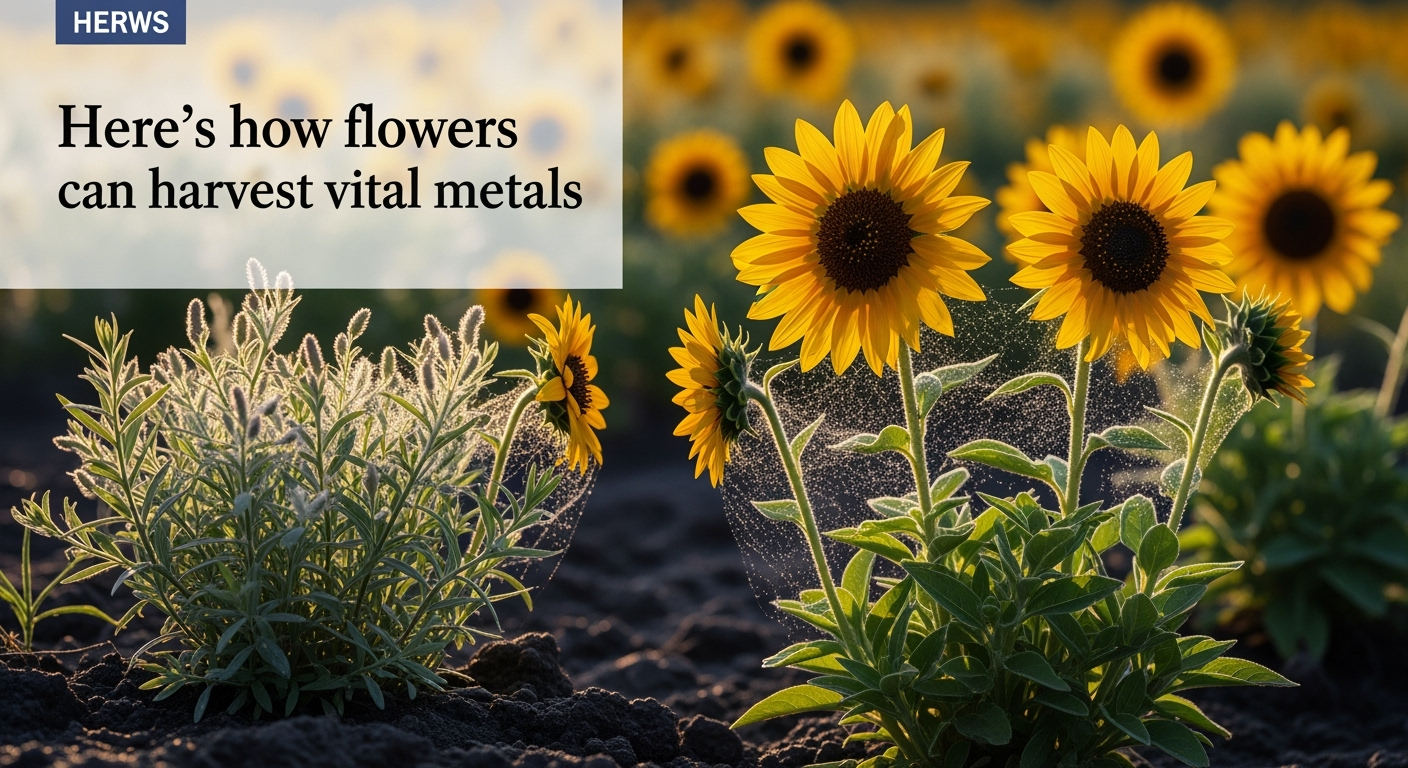Related Articles

The Unseen Costs: Dissecting the Dark Side of Viral Food Trends

Solar's Bold Horizon: Powering Earth and Beyond in a New Energy Era





In an innovative leap that blends agriculture with metallurgy, scientists and researchers are increasingly turning to the plant kingdom for a sustainable solution to meet the world's insatiable demand for vital metals. This pioneering approach, known as phytomining or agromining, leverages the remarkable ability of certain "hyperaccumulator" plants to absorb and concentrate metals from the soil into their tissues, offering a greener, less disruptive alternative to conventional mining practices. As global resources dwindle and environmental concerns escalate, these botanical prospectors are cultivating a future where metal extraction is not only economically viable but also ecologically responsible.
At the core of phytomining lies a fascinating biological phenomenon: phytoextraction. This process utilizes specific plant species, often referred to as hyperaccumulators, that possess unique physiological mechanisms allowing them to thrive in metal-rich soils and absorb these elements at concentrations hundreds to thousands of times higher than typical plants. Unlike most flora that would succumb to metal toxicity, hyperaccumulators efficiently shuttle these metal ions from their roots to their shoots and leaves, storing them in a non-toxic form within their biomass. This natural aptitude for metal uptake makes them ideal candidates for what is essentially "cultivating ores."
The journey of metal extraction begins when these specially selected plants are grown in soils containing target metals, which could be low-grade ores, industrial by-products, or contaminated sites. As the plants mature, they draw up water and nutrients, along with dissolved metal ions, through their root systems. These ions are then transported and accumulated in the harvestable parts of the plant, such as stems and leaves. Once the plants reach maturity and have absorbed sufficient quantities of metal, they are harvested, much like any agricultural crop. The harvested biomass is then dried and typically processed through burning, producing a metal-rich ash known as "bio-ore." This bio-ore boasts a significantly higher metal content than conventional ores, simplifying subsequent extraction and refining processes.
The spectrum of metals amenable to phytomining is broad and critical to modern industries, including those vital for green technologies. Hyperaccumulator plants have demonstrated the capacity to extract metals such as nickel, cobalt, copper, zinc, cadmium, lead, thallium, arsenic, uranium, strontium, cesium, chromium, manganese, and even precious metals like gold and rare earth elements.
Specific plant species show remarkable selectivity and efficiency for different metals. For instance, Pennycress (Thlaspi caerulescens or Noccaea caerulescens) is a known hyperaccumulator for zinc and cadmium, thriving in contaminated soils and accumulating these metals in high concentrations. Alyssum bertolonii and Berkheya coddii are notable for their ability to accumulate nickel, with some species able to concentrate up to 16% nickel in their sap or 2-3% by mass in dried plant tissue. Indian mustard (Brassica juncea) has been found to absorb lead and cadmium, while sunflowers (Helianthus annuus) are effective in extracting lead, arsenic, and uranium. Even common plants like chicory, white clover, and bindweed have shown an ability to accumulate various metals from urban soils. Research has also identified tropical plants like Cow Grass, Brake Fern, and Indian Pennywort as effective in absorbing cadmium, arsenic, lead, and chromium.
The implications of phytomining extend far beyond mere metal recovery, offering substantial environmental and economic advantages over traditional mining. Conventional mining often entails significant habitat destruction, soil erosion, and widespread pollution of water and air. In stark contrast, phytomining is a far less disruptive process, minimizing soil disturbance, reducing erosion risks, and preventing the leaching of pollutants into groundwater. Furthermore, as plants grow, they naturally absorb carbon dioxide from the atmosphere, contributing to carbon sequestration and enhancing the overall environmental sustainability of the process. The energy footprint of phytomining is also considerably smaller, primarily involving planting, harvesting, and biomass processing, rather than the intensive energy demands of excavation and smelting.
Economically, phytomining presents a compelling alternative, particularly for low-grade ores or in situ mining from existing soils and waste materials where conventional methods are not viable. It transforms contaminated lands, such as industrial sites or mine tailings, into productive "metal farms" where the cost of cleanup can be offset by the revenue generated from the extracted metals. For example, an Australian nickel phytomine could yield an estimated $11,500 in profit per hectare per harvest, while a gold phytomine could generate $26,000 per hectare, especially when integrated with bioenergy production. The recovered bio-ore's high purity makes it particularly suitable for high-demand applications, such as lithium-ion batteries. The global market for phytoremediation, which includes phytoextraction, is estimated to be between $34 and $54 billion, highlighting the growing recognition of this green technology.
Despite its immense promise, phytomining is still largely in the research and development phase, facing challenges in achieving commercial-scale efficiency and widespread adoption. Critics point to its slower pace and lower efficiency compared to the sheer volume processed by traditional mining. Scaling up operations requires extensive land use and careful management to prevent ecological impacts from large-scale cultivation.
However, ongoing research is focused on optimizing these integrated systems. Efforts include exploring genetically engineered hyperaccumulators for enhanced metal uptake, developing more efficient harvesting and processing techniques, and understanding the precise mechanisms of metal tolerance and accumulation. The historical development of phytomining, initiated by researchers like Rufus Chaney and Alan Baker in the 1980s and 90s, laid the groundwork for current advancements. As demand for critical metals continues to rise and the environmental costs of traditional mining become increasingly apparent, phytomining offers a powerful vision for a future where flowers don't just beautify our landscapes but also sustainably fuel our technological progress. It represents a confluence of ecological preservation and resource acquisition, demonstrating that nature itself holds some of the most innovative solutions to our modern industrial challenges.